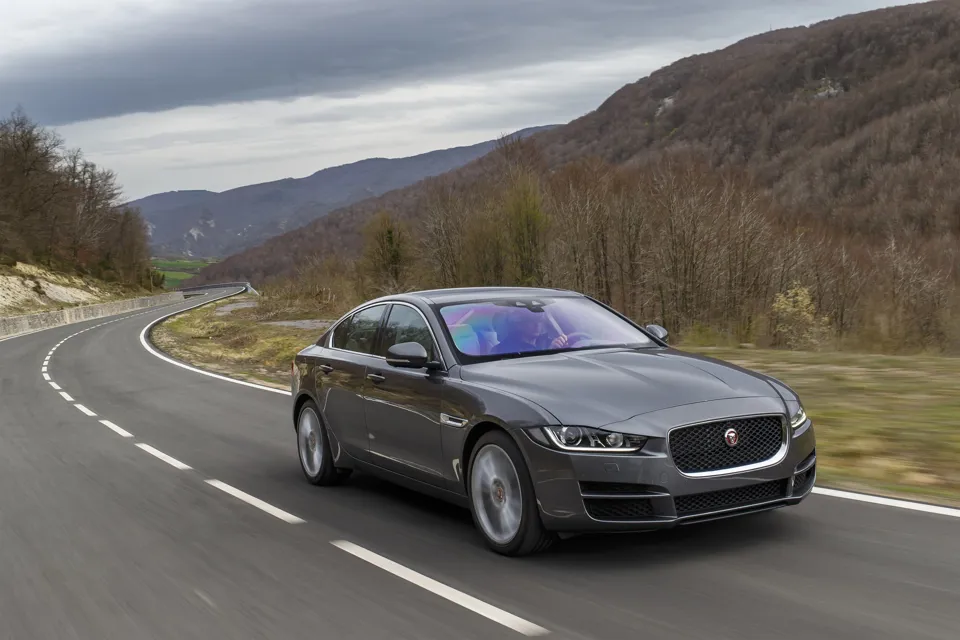An enthusiastic response to its new model line-up has convinced Jaguar Land Rover (JLR) that it can continue its sales surge by targeting the fleet market.
As a result of an £11 billion investment plan, since being taken over by Tata in 2008, the Jaguar and Land Rover brands have enjoyed a substantial growth in sales.
Now, with an improved model line-up that includes Jaguar XE, XF and performance crossover F-Pace, as well as Land Rover Evoque and Discovery, the manufacturer is keen to build on that success.
“We’re on the crest of a wave,” said UK sales director Chris Newitt, “but we know we can do more and the next few years look set to be just as exciting as we continue to roll out distinctive and innovative new vehicles.”
In November, Jaguar recorded a 65% increase in new car registrations compared to the same month last year.
It registered 2,140 units compared to just 1,291 in November 2014.
Land Rover recorded an even higher increase, with new car registrations up 94% on November 2014.
It registered 6,535 units compared to 3,370 for the same month last year.
In terms of fleet, 1,334 units were registered to Jaguar in November – up 86% on November, 2014.
Year-to-date, it had registered 12,198 to fleet, an increase of 46% on last year.
Fleet registrations for Land Rover, meanwhile, showed a 118% increase on November, 2014, at 2,309 units; and year-to-date it stands at 21,393 units, up 41%.
Speaking at a business briefing, Newitt revealed that the Midlands-based manufacturer has already sold out of the launch edition of the F-Pace, Jaguar’s first sport utility that will be launched next year.
Potential global customers have already configured more than 100,000 examples of the car on the company’s website.
The site has recorded totals of 177,000 configurations for the new XF range, 375,000 for the latest Range Rover Evoque and 605,000 for the Land Rover Discovery Sport.
“This all adds up to a fantastic sign of the confidence people in all markets have in our new products,” he told Fleet News.
“However, we’re certainly not regarding this as an excuse for complacency.
“Our owners have put major resource into making sure our next generation cars are fully competitive in terms of vehicle operating costs, emissions, insurance ratings and residual values.
“We are doing this to ensure our cars deliver the best ownership experience for fleet and business motorists as well as maintaining the dynamism that differentiates us from our competitors.
“While we remain strong in the retail sector – that’s what you’d expect in our home market – there’s no doubt that the corporate arena represents a big opportunity for growth and in the sectors where we compete with BMW, Audi and Mercedes-Benz, we are opening up gaps.”
Newitt described JLR as “relatively small” players in the corporate market in 2014, but claimed the brands had made substantial gains this year, which included winning significant supply contracts.
“Back in 2003, our sales totaled 305,000 but by 2008, this figure had dropped to 198,000 – a pretty dramatic decline,” he said.
“What happened wasn’t entirely due to internal circumstances, but things had to change by that time because we had an old product range compared with our competitors and the product we were selling was very top end.
“Instead of relying on the old world for business, we now have a much better balanced portfolio that allows us to ride any global economic fluctuations.”
Every model has been changed and the only car that hasn’t been refreshed is the F-Type.
“JLR is now the UK’s number one manufacturing investor and having a platform like that is a significant factor in allowing us to open up new channels,” concluded Newitt.
“It’s also of great importance for another reason: we now want 75% of our customers to stay loyal to our brands.”

















Petrol Paul - 17/12/2015 15:26
Fantastic to see this range of vehicles doing so well. With both Jaguar and Land Rover models built in Britain its a great national success story. Yes, before some-one points out that TATA is an oversea's company but thats irrelevant when the R&D and Production is here in the UK. While some talk of the demise of the British Car Industry I don't ever think so many cars have been built in (Honda, BMW - Mini, Toyota, Vauxhall, Affinity and JLR all to thank!) I'm Driving to Europe this Summer on Holiday and I'll be smiling each time I see a Jag or Landrover - well done JLR!